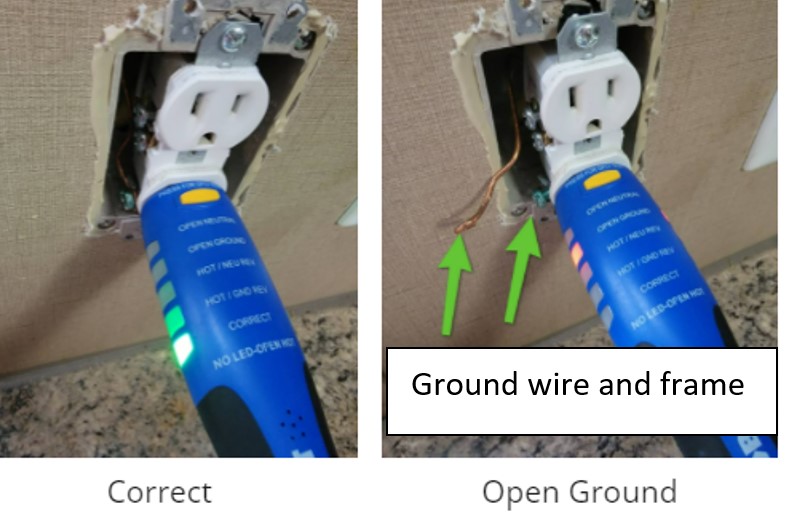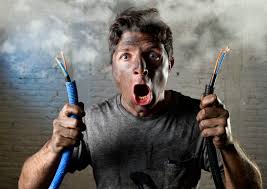
An open ground occurs when you have a 3 prong outlet, that is not showing a ground wire connected. How did it happen, and why does it matter?
Where did it come from?
Most homes built before 1962 used the “two prong” or “two wire” system, so it is very common to find this type of wiring in many older homes. After 1962, equipment grounding conductors (“3 wire systems”) were required to provide electric circuits a low resistance path back to the electric panel. The current would then trip the breaker and disable a dangerous fault condition.

Sometimes though, these 3 prong receptacles were installed in homes that were still wired with a 2 wire system. An ungrounded electrical system is not as safe as a grounded system, but having an open ground is much worse. Imagine plugging in a tool or an appliance that has a metal cover that could be energized. Such a tool wants to discharge a potential fault on the equipment grounding conductor, but no such conductor exists. Now there is a much better chance of you being electrocuted. In the event there is reversed polarity, it’s worse. If polarity is reversed, you could accidentally energize the metal cover just by plugging in the tool or appliance. No switch required, shocking, huh?

How To Repair An Open Ground
Electrical repairs are dangerous, so you should hire a professional to do this type of work. It’s also important to correct this dangerous conditions, and it’s not necessarily an expensive fix. Again, if you are not 100% confident you have the experience necessary to do the job safely, do not try this at home.
You should disconnect power to the circuit, at the panel before making any of the following repairs. After flipping off the breaker, use a tester to confirm the circuit is disabled before doing any work.
- Running new 3 wire conductors is the most obvious and sometimes the most expensive. This is typically done in renovations,
- You can run an equipment ground to the receptacle and connect that equipment ground to any part of the grounding system. You are no longer allowed to bond to water supply piping, because the rise of plastic water supply pipes. It’s too easy to inadvertently disable the ground connection while making plumbing repairs.

- The most cost-effective way is to protect the circuit is usually with GFCI protection. This could be done with GFCI receptacles or with GFCI protected circuit breakers at the electric panel. GFCI protection is designed to trip a circuit when it detects fault conditions. These are effective and will function properly on a two-wire system. Open grounded receptacles that are GFCI protected should be appropriately labeled and this repair will not protect your equipment in case of a surge, so it is not the best repair for media areas and offices. Note that a surge protector plugged into an ungrounded receptacle will not protect your equipment.
- Believe it or not, replacing that receptacle with an older two prong receptacle is considered an adequate repair. This would leave you with a two-prong or ungrounded plug. Not ideal, but better than an open ground.


Recent Comments